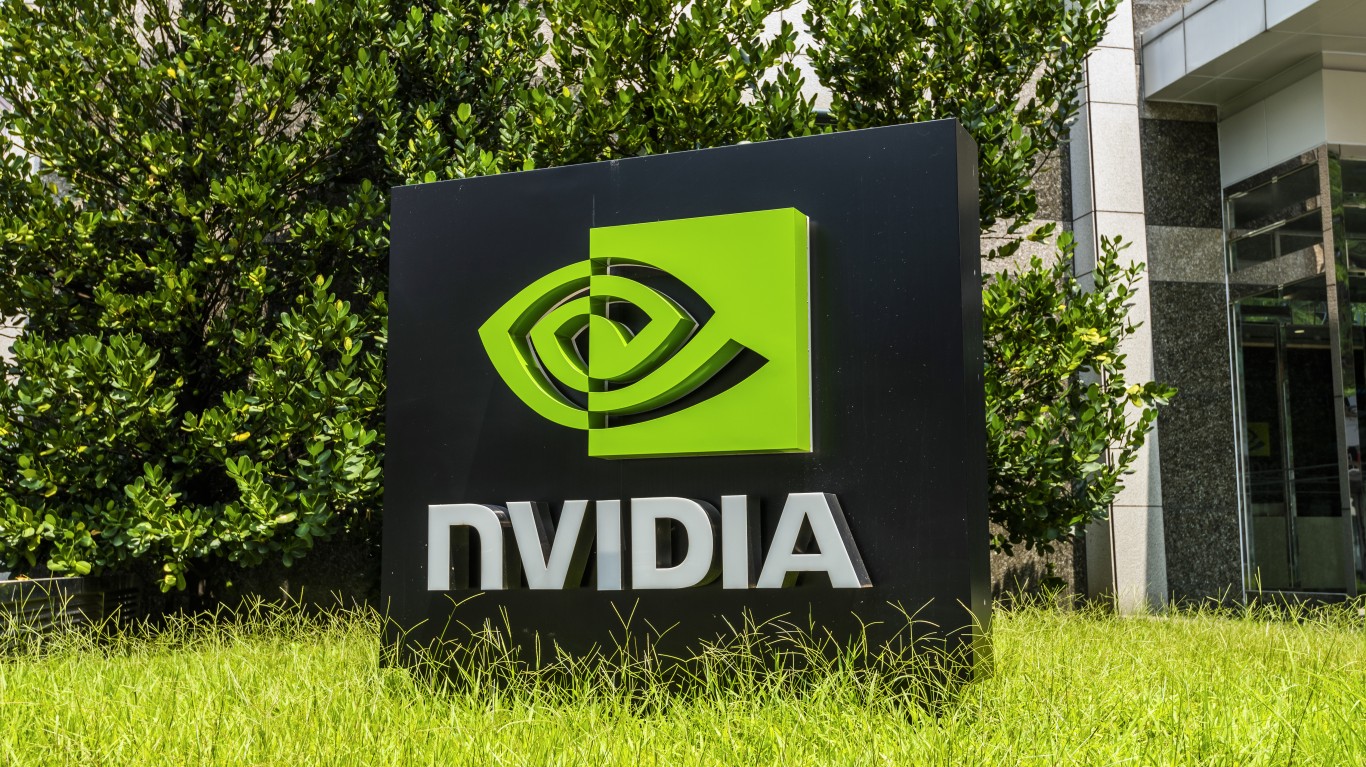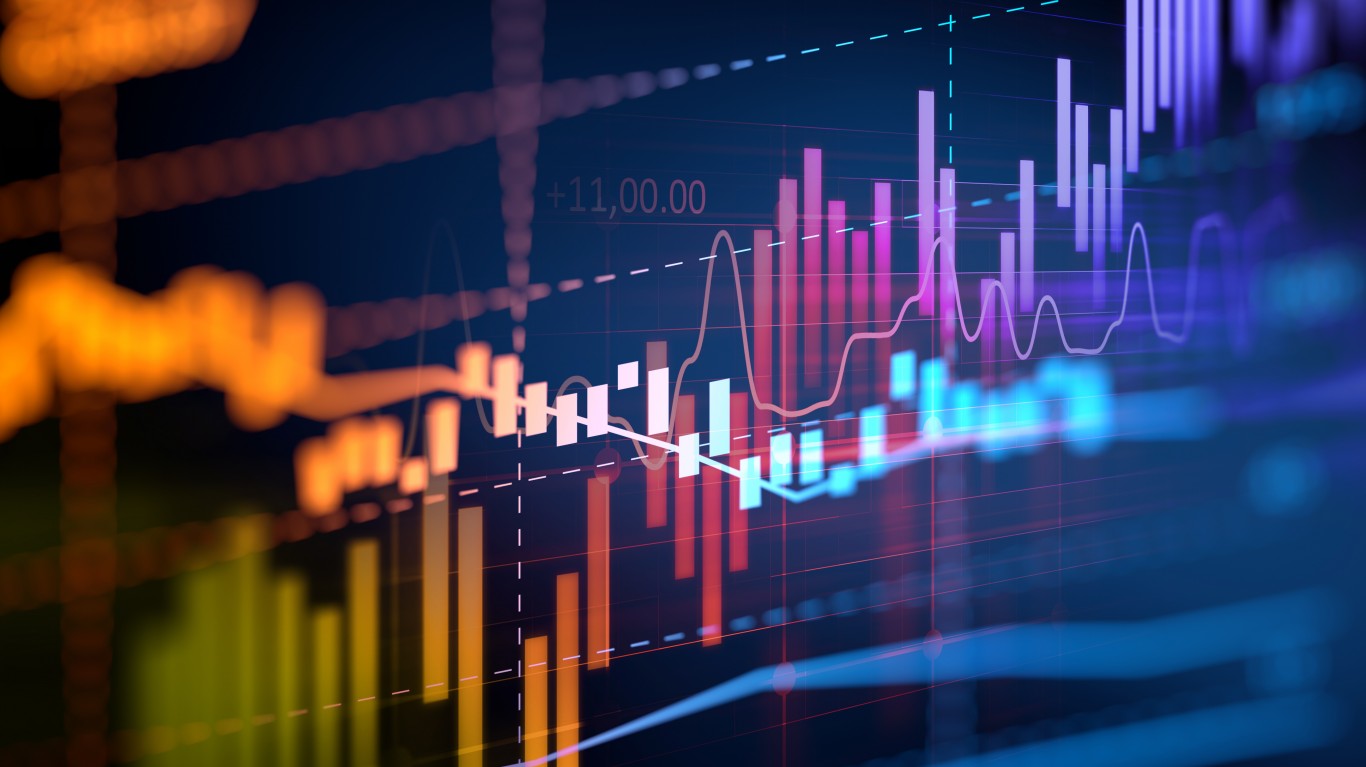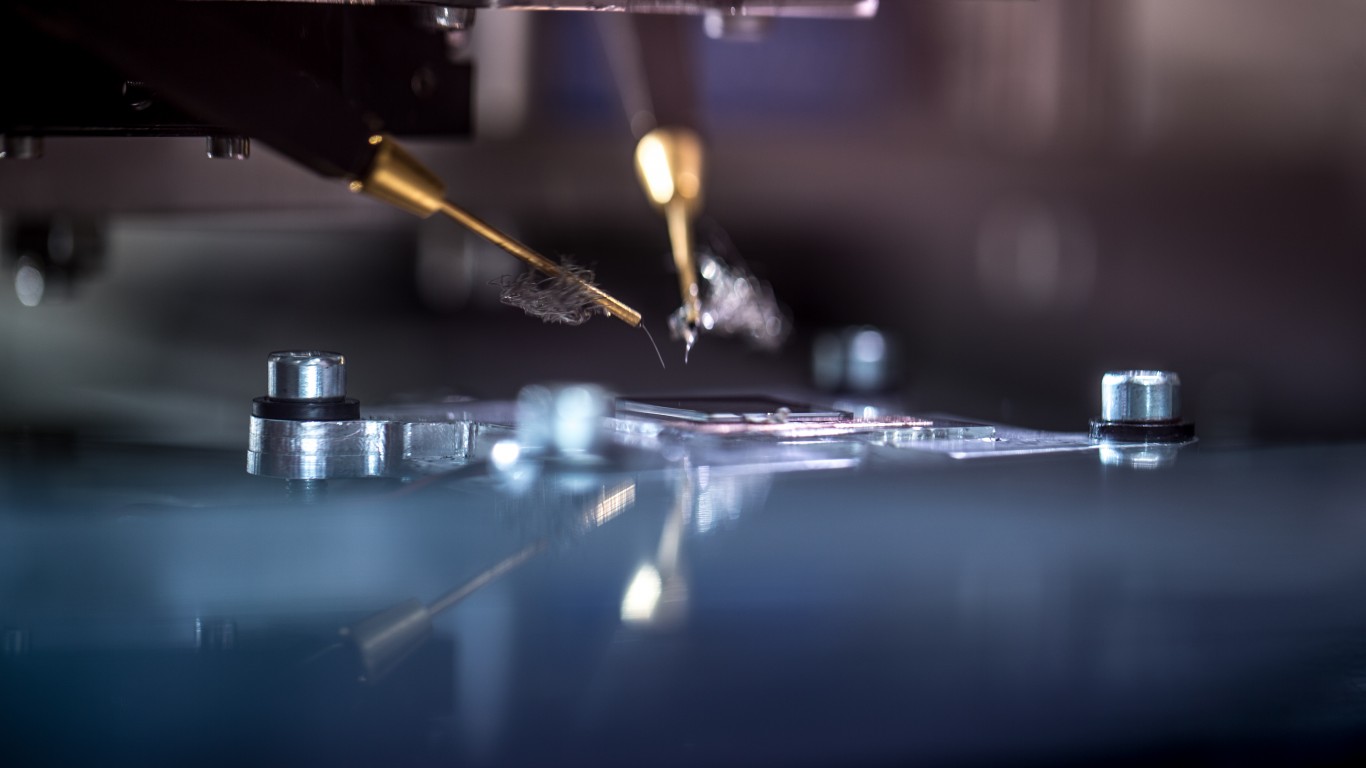Special Report
Nvidia (NVDA) Stock Price Prediction in 2030: Bull, Base & Bear Forecasts

Published:

Since its initial public offering in January of 1999, shares of Nvidia Corp. (NASDAQ: NVDA) have increased by about 130,000%, including the effects of stock splits and dividend payments. The IPO went out at $12 a share valuing the company at around $626 million. By November of that year, Nvidia’s market cap reached $1 billion.
It took six years for Nvidia to reach a market cap of $10 billion, but that doubled in just two years to give the company a $20 billion valuation in 2007. Ten years later, Nvidia’s market cap reached $100 billion and in May of 2023, the company touched a valuation of $1 trillion.
In 1999, $10,000 bought 833 shares of Nvidia stock at $12 a share. The stock has split five times since then:
After the split in 2021, the original 833 had transformed magically into nearly 40,000 shares. At a current price of around $490 a share, that original $10,000 has grown to almost $19.4 million.
While it’s unlikely that anything like that will happen anytime soon again, there might still be a bull case for Nvidia stock over the next six years.

Over the past 10 full fiscal years, Nvidia’s total revenue has risen from $4.68 billion to $26.97 billion, a compound annual growth rate of 49%. Net income has jumped from $681 million to $4.37 billion, a CAGR of more than 55%.
There have been two bursts during that period. The first began in 2016 and lasted until 2019 when revenue doubled to $11.7 billion on demand from bitcoin mining firms. The second–and current–jump began in 2022 on rising demand from artificial intelligence firms like Google and OpenAI. The length of this second period has yet to be determined, and this is what analysts and investors are trying to figure out.
First, the numbers.





As impressive as these numbers are, the consensus revenue estimate for fiscal 2024 (ending in January) revenue is $54.11 billion, up 100.6% year over year. Earnings before interest and taxes are forecast to come in at $31.11 billion, up 244.2%. The EBIT-to-enterprise value (EV) multiple for 2024 is a heady 38.4. The expected P-E multiple for fiscal 2024 is 44.6.

The challenge for Nvidia over the next seven years will be maintaining its established technological leadership. Right now, the company’s graphics processing units (GPUs) essentially have a stranglehold on the market. Several competitors are driving toward challenging Nvidia’s dominance: Advanced Micro Devices Inc. (NASDAQ: AMD) and Intel Corp. (NASDAQ: INTC), among the big boys, and startups like d-Matrix, Rain Neuromorphics, Qyber, Modular, and MatX are in the game as long as they can continue to get funding.
Another of Nvidia’s competitors is Sapeon Inc., a Silicon Valley-based firm owned by South Korean giants like SK Hynix and SK Telecom. The company showed off its latest AI chip on Wednesday and expects volume production to begin in the first half of next year.
Nvidia’s secret sauce is the Cuda programming language that optimizes the performance of its GPUs. Cuda does not work with other makers’ chips. Challengers will have to come up with alternatives in order to compete. That is both more difficult and expensive than it sounds.

Our predicted prices for Nvidia stock in 2030 are $860 (base), $2,005 (bull), and $242 (bear). We’ll break down each of these scenarios in more detail below.

Before getting into the ups or downs, let’s set the stage by giving the base-case scenario for revenue and EPS, along with the year-over-year change for each. For the 2024 through 2026 fiscal years, the estimates represent the average of 30 or more analysts. For the remaining years in this survey, there are fewer than 10 estimates.
If Nvidia gets U.S. government approval to ship its lower-performance H800 chip to Chinese customers, the base case may increase somewhat. But top-of-the-line H100 and A100 chips will remain restricted.







Over the period, the average P/E multiple is 23.7. The current average P/E multiple for the entire semiconductor industry is 25.2. Nvidia’s current P/E multiple is 118.4. Using 2030’s estimated EPS of $34.17 and the industry-average P/E multiple, Nvidia’s share price will be almost $860. That’s a return of 75.5% over the next seven years. Nvidia currently pays a negligible dividend yield of 0.03%. In 2021, Nvidia’s 4-for-1 stock split happened when shares traded at around $750.

Nvidia’s ability to improve on that current base case depends almost entirely on its challengers’ ability to deliver competitive products. The longer it takes, the longer Nvidia can charge a hefty premium for a single H100 GPU. According to an August report at Tom’s Hardware, the profit margin on a single H100 was 823%. The estimated cost of the H100 is $3,320, and the street price for one is between $25,000 and $30,000.
Using revenue estimates for the next seven years, sales are expected to rise by nearly 200% by 2030. In late October 2022, before AI dazzled investors with its potential, Nvidia’s P/E multiple was 57.8. That was about the same as the multiple two years earlier. Using that as our multiplier, at the estimated 2030 EPS of $34.17, Nvidia’s stock will trade at around $2,005 per share.

That kind of pricing won’t last forever, obviously, and the base case revenue gains taper off after fiscal 2025. AMD expects to launch its MI300X AI accelerator chip later this year and begin shipping in small quantities early next year.
Intel’s Gaudi AI accelerator has been posting impressive performance results lately and could begin volume shipments next year. Intel is also counting on AI to move away from cloud computing to the desktop. The company believes it will ship “tens of millions of AI-enabled PCs into the market throughout 2024.”
Volume production and competitors’ ability to overcome Nvidia’s Cuda platform software will decide the issue. That’s why revenue growth remains Nvidia’s major focus. If it can boost sales, profits will follow.
A lot of things have to go right for Nvidia’s competitors in order for them to challenge the title of high-performance kingpin. Likewise, Nvidia would have to blunder its way to also-ran status. Unlikely as it may be, in this scenario, the company’s sales growth could decline by half to a mere 100%, and its P/E multiple would drop to pre-2015 levels (the start of the bitcoin mining boom) of around 16.5, yielding a share price estimate of around $282, a 42.4% decline from the stock’s current price.
Credit card companies are pulling out all the stops, with the issuers are offering insane travel rewards and perks.
We’re talking huge sign-up bonuses, points on every purchase, and benefits like lounge access, travel credits, and free hotel nights. For travelers, these rewards can add up to thousands of dollars in flights, upgrades, and luxury experiences every year.
It’s like getting paid to travel — and it’s available to qualified borrowers who know where to look.
We’ve rounded up some of the best travel credit cards on the market. Click here to see the list. Don’t miss these offers — they won’t be this good forever.
Thank you for reading! Have some feedback for us?
Contact the 24/7 Wall St. editorial team.